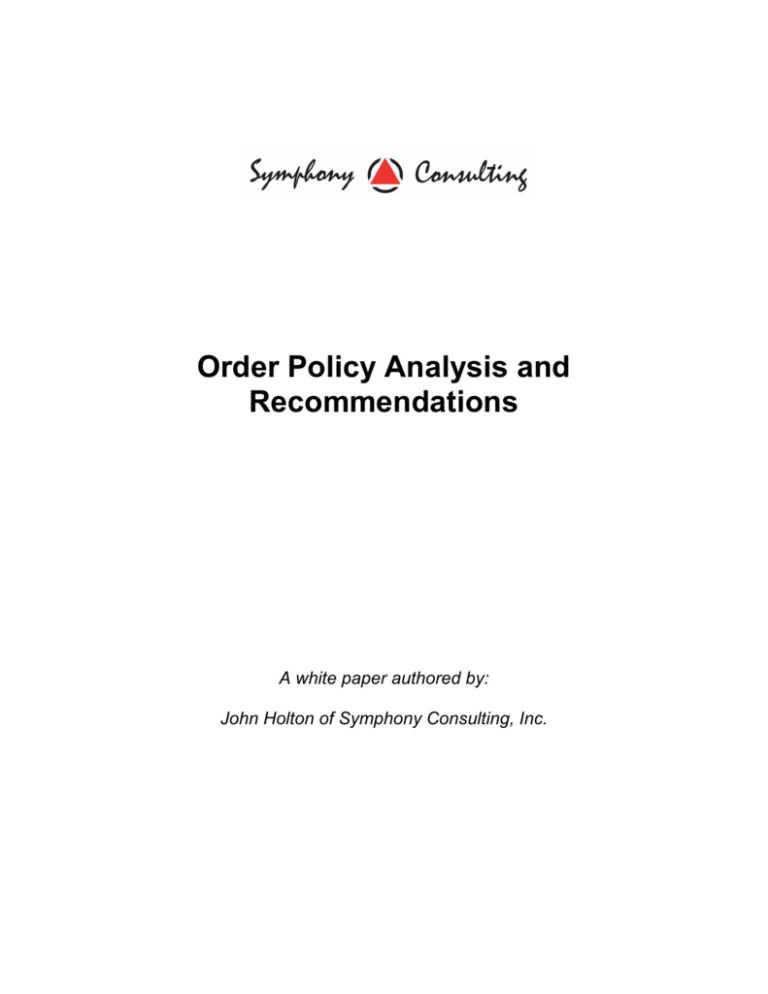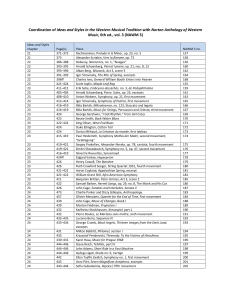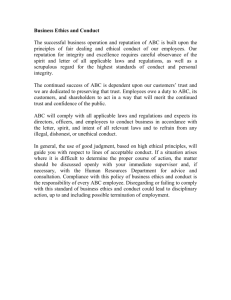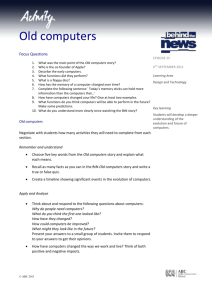
Order Policy Analysis and
Recommendations
A white paper authored by:
John Holton of Symphony Consulting, Inc.
Order Policy Analysis and Recommendations
Order policies set the frequency for deliveries to a company. This has a major influence on the
amount of inventory a company carries and on the number of transactions (and corresponding
overhead) a company must support.
Traditional Solution:
The majority of companies base their ordering policies on a part’s ABC classification. The ABC
classification is a way of stratifying parts into their relative value. Typically companies will
designate as “A” parts, the relatively few parts that make up the top 80% of the forecasted
spend, “B” parts will make up the next 15% of the forecasted spend, and the vast number of
parts that make up the last 5% of the forecasted spend will be designated as “C” parts. In terms
of ordering policy, companies determine the weeks of supply they want buyers to purchase for
each category - for example:
A = 2 weeks of supply
B = 6 weeks of supply
C = 13 weeks of supply
This methodology has survived since the early part of the 20th century because it is easy to
implement and easy to understand. However, as explained below, it has outlived its usefulness.
Problems with Traditional Model:
The downside to the traditional approach is that is does not yield very good results. Most
companies are either carrying too much inventory, or they are weighed down with extra overhead
to support unnecessary transactions, or both. The problems with the traditional approach stem
from the following issues:
Static: The business environment changes rapidly and companies need to be more nimble than
ever. To stay competitive, companies must respond to the changing realities of the market. Given
that environment, it is surprising that very few companies adjust their order policies to reflect
changes in major cost drivers. The cost of capital may rise or fall by 50% in a six-month period.
This should cause a re-evaluation of ABC ordering policy. In most companies, it is not uncommon
for the order policy to sit unchanged for years.
Too few categories: With only three or four levels of stratification (e.g. A,B,C, D? E?), parts with
very different annual spend rates are grouped into the same category and treated the same. The
highest parts in a category might have 50 times the spend rate of the parts at the bottom of the
category. They are treated the same but the economics are completely different.
Absolute versus relative value: All “A” parts are not created equal. Since ABC classification is
based on relative dollar value, an “A” part in one division of a company may be completely
different in terms of spend rate from an “A” part in another division. A company with $200 million
in revenues has “A” parts that it treats about the same as a company that has $2 billion in
© 2005 Symphony Consulting - All rights reserved.
Page 2
revenue treats its “A” parts. The economics (volumes, dollar spend) may be completely different
for those parts but they are treated the same.
Inconsistent application: In most companies, the rules governing weeks of supply are open to
interpretation and judgment by the buyers. Where this occurs, you get wide variations in
execution that has more to do with the personalities of the people involved rather than the
economics of the situation. This can lead to unnecessary inventory and expense.
Outdated: Companies have been very successful in eliminating archaic business processes. As a
stark contrast to that success, ABC ordering policy continues to operate in the “same old way.”. It
has survived, relatively unchanged, since the 1940s. At that time, the lack of computers
necessitated a simple approach. Today we have powerful computers so it no longer makes sense
to use this approach to drive modern, complex ERP systems.
Costly: For all of the reasons stated above, the ABC approach yields poor results. For most
companies this means excessive transactions, a poor allocation or resources, missed opportunities
on high-value parts, and unnecessary inventory exposure.
Recommended Solution:
Symphony Consulting, Inc. has developed a model that eliminates all of these problems and
lowers costs significantly. Our model uses modern algorithms to create the “optimum” order
policy for each part. Although the model is complex, it is easy to implement and use because the
output integrates into standard ERP fields. Our program runs in the background and has a simple
data handshake with ERP. Buyers still use the same tools and reports but the action messages
they see are based on our modern approach rather than the traditional ABC methodology. Within
our software, it is easy to update critical cost drivers so the solution remains current. Also, the
program is flexible and can be tailored to meet a variety of needs within a business.
Using data from a number of OEMs and EMS (electronic manufacturing services) companies, we
have demonstrated the power of our solution. The table below shows some results:
Symphony
%
TOP
Change
Transactions
Current
Inventory
TOP
Inventory1
%
Change
Case 1 73,944
21,453
-71%
$6,538K
$4,878K
-25%
Case 2 46,094
11,775
-74%
$8,539K
$4,244K
-51%
Case 3 8,706
4,493
-48%
$3,670K
$2,848K
-22%
Current
Transactions
2
Case 4 68,952
14,209
-80%
-
$5,148K
-
Case 5 6,639
2,287
-65%
-
$457K3
-
Notes:
1 – inventory also affected by forecast change response, ECO implementation, and system parameters
2 – no current on-hand included in this analysis – expected turns at the component level = 10.6
3 – no current on-hand included in the analysis – expected turns at the component level = 15.6
© 2005 Symphony Consulting - All rights reserved.
Page 3
As can be seen from the data, transactions drop dramatically in every case. In general, our
solution eliminates busy work on low-value transactions and puts more emphasis on those few
parts that create the bulk of the inventory exposure. The bandwidth that our solution creates
allows organizations to be more responsive to business fluctuations. In addition, the reduced
transactions translate directly into bottom-line savings.
The time has come to replace the ABC approach with a more modern solution to establish order
policy. The Symphony TOP software provides a dynamic and effective tool to manage order policy
while dramatically lowering cost and inventory exposure.
John Holton is the Co-founder and President of Symphony Consulting, Inc., a Silicon Valley supply chain
consulting firm. For more information, visit www.symphonyconsult.com.
© 2005 Symphony Consulting - All rights reserved.
Page 4







